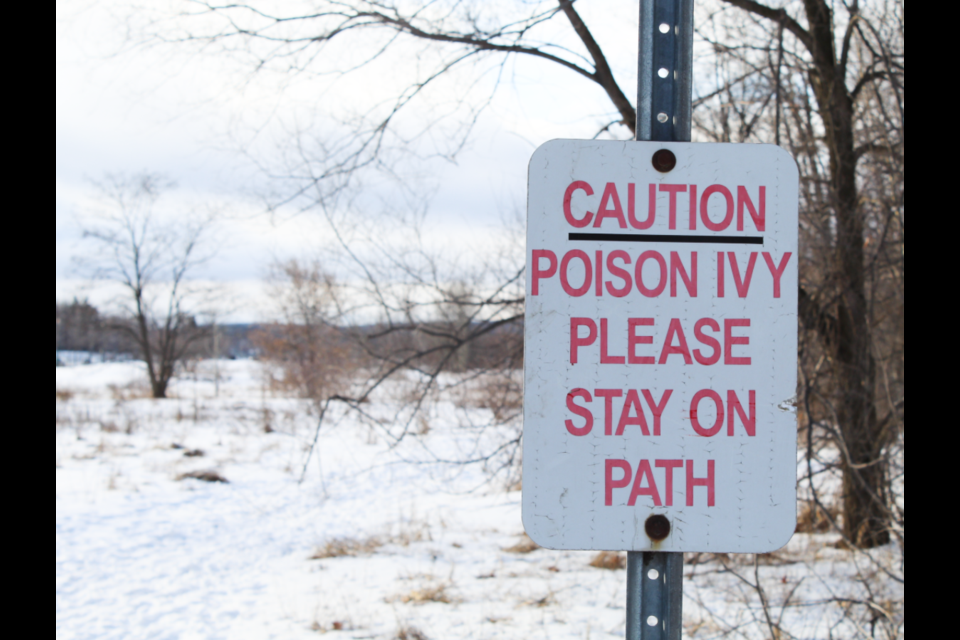Forget Kempenfest! There will soon be an even bigger buzz coming to the lakeshore.
Work will go ahead to create a naturalized area at Allandale Station Park along the city's lakeshore, which would leave it relatively untouched to the naked eye, but overflowing with information while also helping the health of bees and red oaks.
At this week's meeting, city council gave final approval to prioritizing the Allandale Station Park naturalization project as part of the 2021 business plan. Staff in the operations department will also work with community groups to begin preparing the site this year.
The 16-acre park, located near Minet's Point, is situated east of the Southshore Centre and Military Heritage Park, and is a popular destination for walkers and wildflower lovers, and also home to the red oak tree.
The idea to naturalize the park was brought forward by a subcommittee, whose members have been working closely with the city's horticultural staff.
"Residents and interested groups across the city wish to encourage the further naturalization of this area with more native wildflowers and pollinating plants, along with the protection of the existing red oak woodlot that follows the slight ridge paralleling the east end of the existing multi-purpose trail," subcommittee chair Alan McNair said in a report on the plan.
"The removal of some areas of poison ivy would also make sense," added McNair.
The plan would also include the removal of invasive species, such as dog strangling vine and garlic mustard.
Deputy Mayor Barry Ward told BarrieToday naturalization is something he supports.
“I would like one little part of the lakeshore to remain natural," Ward said. “There has been talk about removing the poison ivy and things like this, but I’m not sure we even have to do that."
Work could also include a detailed ecological inventory at the site, with help from organizations such as Living Green Barrie, the Barrie Native Friendship Centre, and Nature Barrie, all of which had representation on the subcommittee alongside the Garden Club, the Allandale Neighbourhood Association, and residents.
The area, which is expected to see an "ongoing gradual naturalization," could provide a home for bees, butterflies and other pollinating insects. Barrie is the 30th Bee City in Canada, a designation that indicates its commitment to protect and create pollinator habitat, while also furthering community education.
An idea was floated a few years ago to build at waterfront stadium at the site, but the naturalization plan officially puts the kibosh on that.
“I wasn’t for the stadium, so I guess something has to be done with that area,” Ward said. “We haven’t got a whole lot of the lakeshore that is naturalized, so I am in favour of that."
Ward says there are better places for businesses than at Allandale Station Park.
“I actually support more commercialization of the waterfront in the downtown area for things like maybe a restaurant or coffee shop,” the deputy-mayor added. “But in other parts, it should be left natural.”
McNair, who said the city's Waterfront and Marina Strategic Plan "does not speak to this area in great detail," also noted the naturalized area would provide an "emphasis on a passive environment to be enjoyed and provide learning opportunities to appreciate the unique gift Barrie has along the lakeshore."
McNair called the naturalization project "a bold plan to provide long-term protection and enhancement of this major waterfront natural area." It would also include a focus on public education, including how both First Nations and later settlers inhabited and lived off the land. City staff can also assess the forest health in the eastern woodlands in Allandale Station Park to provide baseline data on the condition of the wooded area.
Native wildflowers could also be planted to encourage pollinators, as well as trees bearing edible fruit, such as apple and serviceberry, in addition to plots to restore tallgrass prairie, which has been historically native to part of the Kempenfelt Bay area, according to the report.
Mowing in the area, which will include interpretive signs, would be restricted to maintaining pedestrian access along narrow pathways.
— with files from Shawn Gibson



